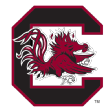With the men's and women's NCAA tournaments moving on to their second week of action, both Sweet 16 fields are set. Some teams, though, have looked more dominant than others in getting there. With the help of tournament data, let's look at which advancing teams (and players) have outperformed expectations the most -- and which have been shakier than expected in their victories.
Here's how we'll be calculating our Heat Index rankings for teams and players in both NCAA tournaments: Teams are judged using Sports-Reference's Simple Rating System (SRS) scores. We'll compare the teams' actual points-per-game differentials in tourney games to the margins we'd expect based on the ratings of each team and its opponent. Then, for players on those hot (or cold) teams, we'll look at the biggest differences between their average Game Score -- a metric that sums up all of a player's various box-score contributions -- in the tournament versus the regular season as a whole, to see who has been driving their team's performances recently by playing better or worse in two tournament games.
For example, the Duke Blue Devils men's team was heavily favored in both of its games, against Vermont and James Madison, but its plus-27.5 average points-per-game margin -- which beat expectations by 12.1 PPG -- was still impressive. So was the performance of freshman guard Jared McCain, whose averages of 14 points (on 47% shooting) and 5 rebounds per game during the season -- good for a 10.9 Game Score per game -- have given way to 22.5 PPG (58% shooting), 5.5 RPG and an 18.8 Game Score during the tourney, making him one of March's biggest breakouts thus far.
Likewise, the Indiana Hoosiers women have beaten their NCAA opponents by 20 points per game, which includes a seven-point victory over a tough Oklahoma squad, giving them an average margin of five points better than expected. Leading the way for the Hoosiers? Senior guard Sydney Parrish, who has bettered her season averages of 10.4 points, 6.1 rebounds, 2.3 assists, 0.7 blocks and an 8.5 Game Score by averaging 12.0 PPG, 7.5 RPG, 4.5 APG, 2.0 BPG and a 13.4 Game Score during the NCAA tournament.
But surprisingly, even after their two-round performances, neither McCain and the Blue Devils nor Parrish and the Hoosiers are No. 1 in our Heat Index.
Here are the teams -- and their players -- who have outproduced or undershot their expectations the most during the first two rounds of the men's and women's NCAA tournaments:
Tourney torching: These teams are just heating up
Reigan Richardson and Duke claw back from a double-digit deficit to upset Ohio State in the round of 32.
No. 6 CLEMSON TIGERS
Tournament PPG Differential: plus-14.5
Versus Expected: plus-16.1

As the No. 6 seed in the West Region, Clemson was supposed to beat No. 11 New Mexico in the round of 64. But the Lobos had much better metrics than the typical 11-seed, leaving the Tigers as slim favorites according to SRS. This, in turn, made Clemson's 21-point victory over New Mexico one of the most impressive blowouts of a good opponent in the tourney to date. Then, Clemson turned around and faced No. 3-seeded Baylor, the nation's 13th-best team by SRS and a four-point favorite over the Tigers in the ratings. Against those expectations, Clemson's 72-64 win against the Bears -- which saw the Tigers lead by double-digits for most of the second half before Baylor closed the gap in the final five minutes -- also stood out, making the Tigers our biggest statistical overachiever of the 2024 men's tourney.
Player on the rise: Chase Hunter, point guard (17.1 Game Score, plus-8.6 vs. expected)
With leading regular-season scorers PJ Hall and Joseph Girard III held below their usual averages -- Hall has been limited to 19.5 minutes per game because he picked up nine fouls in two games, including fouling out of the Baylor game, and Girard has shot 29% from the field -- Clemson needed someone to step up and carry them against a pair of tough opponents. Enter Hunter, who was the team's No. 3 scorer during the regular season with 12.7 PPG (shooting 42% from the field), in addition to contributing 3.1 assists and 0.6 steals per contest. In the tournament, Hunter has led the Tigers with 20 points or more in both games, averaging 20.5 points (50% FG%) with 6.0 APG and 2.0 SPG. Hunter ranks 13th in the tournament in average Game Score so far, and every player above him on the list -- from Purdue's Zach Edey to UConn's Tristen Newton -- had a significantly higher mark than him during the season overall.
Next up: vs. No. 2 Arizona, Thursday, 7:09 p.m. ET (CBS)
Michael Wilbon explains why South Carolina is the most compelling story of the NCAA women's tournament so far.
No. 7 DUKE BLUE DEVILS
Tournament PPG Differential: plus-11.5
Versus Expected: plus-6.9

Duke, the No. 7 seed in the Region 3 in Portland, has won both of its games in the women's NCAA tournament by double-digits -- first beating No. 10 Richmond 72-61, then pulling off a huge 75-63 upset against No. 2 Ohio State. It's a run that didn't look especially likely when Duke was down 37-28 at the half in Round 1 against the Spiders, but coach Kara Lawson's team rallied to outscore Richmond by 20 the rest of the way. A similar story played out against the favored Buckeyes: Duke found itself down 16 with five minutes left in the second quarter and still trailed by double-digits as halftime approached. But once again, the Blue Devils dominated the rest of the contest, beating the Buckeyes 43-27 in the second half to turn another double-digit deficit into a double-digit victory.
Player on the rise: Reigan Richardson, guard (20.6 Game Score, plus-14.1 vs. expected)
Though Richardson was Duke's leading scorer (12.4 PPG) for the regular season, the Blue Devils featured an ensemble cast with no single player dominating the numbers. The team leader in average Game Score, Oluchi Okananwa, has come off the bench in all 33 of her appearances; meanwhile, Richardson ranked fourth on the roster in Game Score. But during the NCAA tourney, Richardson has stepped up in a huge way: She's scoring an astounding 26.5 PPG (on 58% shooting, 63% on 3's) with 7.0 RPG. By average Game Score, only five players (UConn's Paige Bueckers, Stanford's Kiki Iriafen, Tennessee's Rickea Jackson, Iowa's Caitlin Clark and Iowa State's Emily Ryan) are having a more productive tournament.
Next up: vs. No. 3 UConn, Saturday, 8 p.m. ET (ESPN)
Caitlin Clark, Kate Martin and Gabbie Marshall speak to Holly Rowe after Iowa's defeat of West Virginia.
No. 5 GONZAGA BULLDOGS
Tournament PPG Differential: plus-21.0
Versus Expected: plus-14.3

After a supposedly down season in Spokane -- the Zags entered the men's tourney with their lowest rank in the AP poll (18th) since 2016 -- the Midwest Region No. 5 seed Gonzaga has rolled into the Sweet 16 with a pair of 21-point victories. One wasn't too much of a shock: No. 12 McNeese State didn't look like a particularly obvious upset candidate. Still, the Bulldogs left no doubt about the outcome, opening up a 24-point lead with three minutes left in the first half en route to the 86-65 win. Then came a lopsided, eye-opening 89-68 victory over Kansas, one of the nation's top 20 teams by SRS. Yes, KU was down leading scorer Kevin McCullar Jr., who was injured earlier this month. But Gonzaga held each of Kansas' next three leading scorers at or below their season averages, as the Jayhawks shot 39% from the floor while the Bulldogs blew the game open with a 35-9 run to start the second half.
Player on the rise: Anton Watson, small forward (18.8 Game Score, plus-4.8 vs. expected)
Watson -- a fifth-year senior and local Spokane product -- is an easy player to root for, having worked his way up from being a super-sub to being a starter and the Zags' second-leading scorer this season. His steady improvement has reached an entirely new level after a near-triple-double (13 points, 11 boards, 9 assists) against McNeese State and a 21-point, six-rebound effort to lead all scorers against Kansas. During the tournament, Watson has raised his scoring average from 14.5 PPG to 17.0, his field goal percentage from 58% to 67%, his rebounds from 7.2 RPG to 9.5 and his assists from 2.6 APG to 5.0, establishing his status as Gonzaga's best player so far.
Next up: vs. No. 1 Purdue, Friday, 7:39 p.m. ET (TBS/TruTV)
No. 1 SOUTH CAROLINA GAMECOCKS
Tournament PPG Differential: plus-49.5
Versus Expected: plus-6.6

We're used to seeing total domination from South Carolina, which hasn't lost in 362 days and won as many games this season by 50-plus points as it did by single digits (six apiece). But even by the Gamecocks' standards, they have been crushing the tournament competition. Their plus-99 total margin of victory is 48 points better than any of the other Sweet 16 teams, and it's the highest through two games of an NCAA tourney since UConn's plus-113 mark in 2018. Most impressive was Sunday's 88-41 evisceration of No. 8 seed North Carolina, the No. 36 team in the country by SRS. UNC was down 20 after a quarter and trailed by 37 at the half, ending up on the receiving end of its worst tournament defeat in at least two decades. For South Carolina, though, it was just another rung on the championship ladder.
Player on the rise: Chloe Kitts, forward (16.7 Game Score, plus-8.4 vs. expected)
The Gamecocks have had plenty of standouts in this tournament, but the biggest overachiever is Kitts, who was only the team's fourth-leading scorer (tied with Ashlyn Watkins at 9.6 PPG) during the regular season. In the NCAA tourney, Kitts is scoring 16.5 points per game -- second only to MiLaysia Fulwiley -- on an incredible 92.9 field goal percentage, while also adding seven rebounds per game. She has done all of this while coming off the bench both games and averaging 21.8 minutes, in part because the contests were so out of hand so early. We'll see what kind of numbers Kitts and her teammates put up if they get to log more playing time going forward.
Next up: vs. No. 4 Indiana, Friday, 5 p.m. ET (ESPN)
Frosty forecast: These teams appear to be cooling down
No. 2 ARIZONA WILDCATS
Tournament PPG Differential: plus-15.0
Versus Expected: minus-3.8

It's hard to be too down on any team that punches its ticket to the Sweet 16, but Arizona has had a few moments that make us question whether it can live up to expectations as a championship squad. Against theoretically overmatched No. 15 seed Long Beach State in Round 1, the Cats nonetheless trailed with 2:38 remaining in the first half. Arizona's ensuing 24-2 run helped put the game away, but their final plus-20 victory margin was lower than we'd expect from SRS. The next round, No. 7 seed Dayton stubbornly stayed in the game, pulling within three points with 11:40 to go before Arizona asserted itself again. We have to wonder whether these Wildcats' habit of playing with their food will eventually come back to bite them.
Player on the slide: Oumar Ballo, center (11.0 Game Score, minus-2.1 vs. expected)
Either of Arizona's 7-foot centers -- the starter, Ballo, or backup Motiejus Krivas, whose Game Score is down 3.3 versus expected -- would suffice here. The team usually gets 21% of its points and 34% of its rebounds from the big-man duo, but those stats are down to 14% and 31%, respectively, in the tourney despite facing a pair of opponents that rank outside the national top 150 in average height. In the backcourt Caleb Love and Kylan Boswell are playing better than their usual averages and picking up the slack, but a more dominant performance from the bigs, particularly without getting into foul trouble (Ballo is doing OK in that regard, but Krivas has fewer points than fouls, picking up one of the latter every 3.4 minutes of court time), will likely be necessary for this Arizona team to go far.
Next up: vs. No. 6 Clemson, Thursday, 7:09 p.m. ET (CBS)
No. 3 UCONN HUSKIES
Tournament PPG Differential: plus-15.0
Versus Expected: minus-10.6

It's not normal to see Connecticut on the negative side of a list like this, but coach Geno Auriemma's team hasn't quite played like the No. 2 squad in the SRS rankings during the tournament so far. Favored by 33 points in the ratings versus 14th-seeded Jackson State in Round 1, UConn "only" won by 22; this was despite playing starters most of the way (Bueckers, for instance, logged 35 minutes). Then the Huskies survived a scare against No. 6 seed Syracuse, when a game that seemed mostly under control was down to a one-possession margin with less than two minutes to play. Bueckers hit a jump shot and set up another KK Arnold 3-pointer to take command for the Huskies again, but it was UConn's second straight win that was significantly closer than the ratings predicted.
Player on the slide: Nika Muhl, guard (3.7 Game Score, minus-4.0 vs. expected)
There are a handful of Huskies to choose from in this category, with Muhl and Arnold tied among starters in undershooting their typical Game Scores by 4.0 points during the tourney; Aaliyah Edwards' mark is also down by 3.3, and Ice Brady is 4.1 below her usual norm coming off the bench. We'll pick on Muhl, though, because she was No. 4 on the team in Game Score during the regular season -- trailing Bueckers, Edwards and Ashlynn Shade -- but her tournament production (3.5 PPG, 43% shooting, 6.0 APG, 2.5 RPG in 33.7 MPG) has lagged far behind that of those other three. While Muhl is still doing her primary job as point guard, even setting UConn's all-time assist record against Syracuse, the Huskies will probably need more scoring and better shooting from her if they're going to make a Final Four run.
Next up: vs. No. 7 Duke, Saturday, 8 p.m. ET (ESPN)
No. 4 ALABAMA CRIMSON TIDE
Tournament PPG Differential: plus-12.0
Versus Expected: minus-1.5

With the nation's 10th-best SRS rating, Alabama is probably better than its No. 4 seed would indicate. But uneven play against a couple of opponents outside the SRS top 60 has landed the Crimson Tide on our list of squads that need to be better starting in the Sweet 16. Alabama's first tourney opponent, No. 13 seed Charleston, was within a 3-pointer of closing in on Alabama with four minutes to go in the first half, and made the final score (109-96) closer than we'd expect with a late run, albeit during garbage time. Meanwhile, the Bama-Grand Canyon game was a wild, sloppy affair in which neither team shot above 37% and each had double-digit turnovers (27 total). The Tide trailed the 12th-seeded Lopes with just over five minutes remaining, before the unexpected contributions of 11th-leading scorer Mouhamed Dioubate helped save his team's season. But after nearly losing a game they really should have handily won -- 4-seeds had won 10 of their past 11 meetings with 12s -- Bama coach Nate Oats has a lot he needs to tighten up this week.
Player on the slide: Grant Nelson, forward (0.5 Game Score, minus-9.1 vs. expected)
With 11.4 PPG (on 49% shooting), Nelson was Alabama's third-ranked scorer during the regular season, his first season after transferring from North Dakota State. But he has struggled in both tourney games so far, scoring three points (on 1-of-3 shooting) with one rebound in 15 minutes against Charleston, then picking up four fouls in 17 minutes (with just three points and one rebound, shooting 0-for-4 with a turnover) against GCU. Mark Sears and Dioubate significantly exceeded their usual numbers, carrying the Tide. But with No. 5 scorer Latrell Wrightsell Jr. potentially slowed against North Carolina in the Sweet 16 after suffering an injury, Alabama needs Nelson to recreate his production from the regular season now more than ever.
Next up: vs. No. 1 North Carolina, Thursday, 9:39 p.m. ET (CBS)
No. 1 IOWA HAWKEYES
Tournament PPG Differential: plus-18.0
Versus Expected: minus-6.6

We knew ahead of the tournament that Caitlin Clark and Iowa wouldn't have an easy time getting back to the Final Four this year. But even against those expectations, the Hawkeyes have at times struggled more than the ratings would have predicted in their opening games. In Round 1, the Hawkeyes faced a Holy Cross team that was rated more than 40 points beneath them in the SRS, but they found themselves up just two points after a quarter and only won by 26 despite Clark recording a near-triple-double in 31 minutes. And against a solid West Virginia squad on Monday night, the Hawkeyes were, shockingly, tied with just over two minutes remaining in the game. Though they clamped down on defense from there -- WVU shot 1-for-7 down the stretch -- it was too close of a result for comfort in Clark's final career game at Carver-Hawkeye Arena.
Player on the slide: Hannah Stuelke, forward (4.5 Game Score, minus-7.5 vs. expected)
Clark's usual numbers are so good that she is running below her regular-season production despite averaging 29.5 points (granted, on 39% shooting) with 8.0 rebounds, 6.5 assists and 2.5 steals per contest. But Iowa's biggest underperformer is Stuelke, whose regular-season averages of 14.1 points (64% shooting) and 6.7 rebounds -- which gave her the Hawkeyes' second-best Game Score, behind Clark -- have turned into 6.0 PPG (38% shooting) and 6.5 RPG during the tournament. The Hawkeyes need to be better overall than they have looked so far (the nation's No. 1 regular-season offense ranks just 15th in the tourney), and Clark's shooting efficiency is part of that. But they'll be in big trouble without Stuelke providing her usual measure of secondary scoring.
Next up: vs. No. 5 Colorado, Saturday, 3:30 p.m. ET (ABC/ESPN App)
Neil Paine is a contributor for ESPN.
